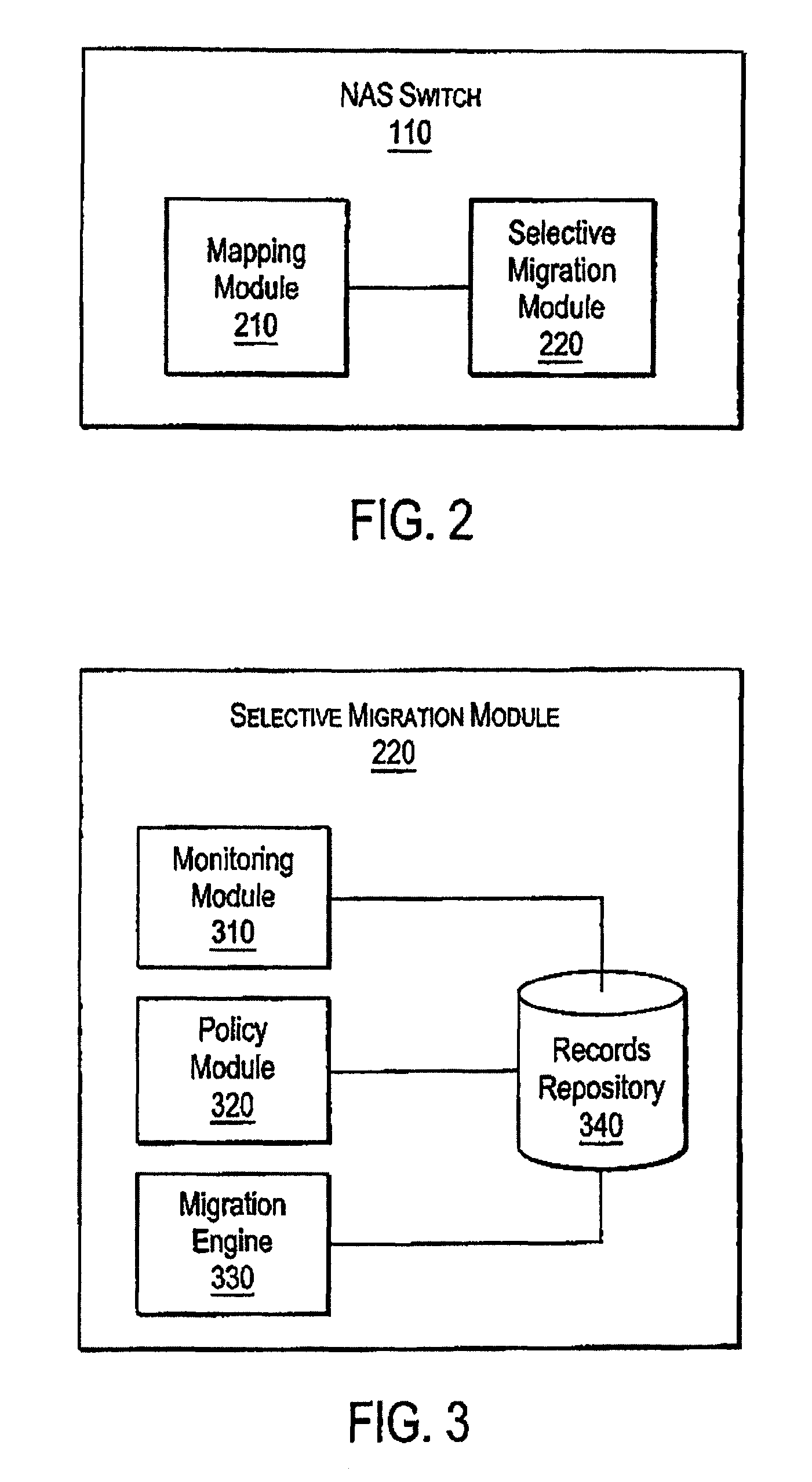Accumulating access frequency and file attributes for supporting policy based storage management
a storage management and access frequency technology, applied in the field of storage networks, can solve the problems of no centralized control, more expensive and powerful san storage network file server use, and disadvantages of nas storage network over san storage network
- Summary
- Abstract
- Description
- Claims
- Application Information
AI Technical Summary
Benefits of technology
Problems solved by technology
Method used
Image
Examples
Embodiment Construction
[0027]A system and method for performing policy-based storage management using data related to access frequency and file attribute accumulation. A policy can include rules that establish which objects are migrated from a source file server to a destination file server. For example, large multimedia files that consume bandwidth on expensive or critical file servers, without adding much value to enterprise productivity, can be migrated to a commodity or less critical file server. In one embodiment, a NAS (Network Attached Storage) switch in the data path of a client and NAS file servers on the storage network, implements selective migration using file handles that are independent of locations on the storage network. Mapping between the file handles which are static and locations which can be dynamic, allows the client to access objects after migration using file handle that persists through the migration.
[0028]FIG. 1 is a high-level block diagram illustrating a storage network system ...
PUM
 Login to View More
Login to View More Abstract
Description
Claims
Application Information
 Login to View More
Login to View More - R&D
- Intellectual Property
- Life Sciences
- Materials
- Tech Scout
- Unparalleled Data Quality
- Higher Quality Content
- 60% Fewer Hallucinations
Browse by: Latest US Patents, China's latest patents, Technical Efficacy Thesaurus, Application Domain, Technology Topic, Popular Technical Reports.
© 2025 PatSnap. All rights reserved.Legal|Privacy policy|Modern Slavery Act Transparency Statement|Sitemap|About US| Contact US: help@patsnap.com



